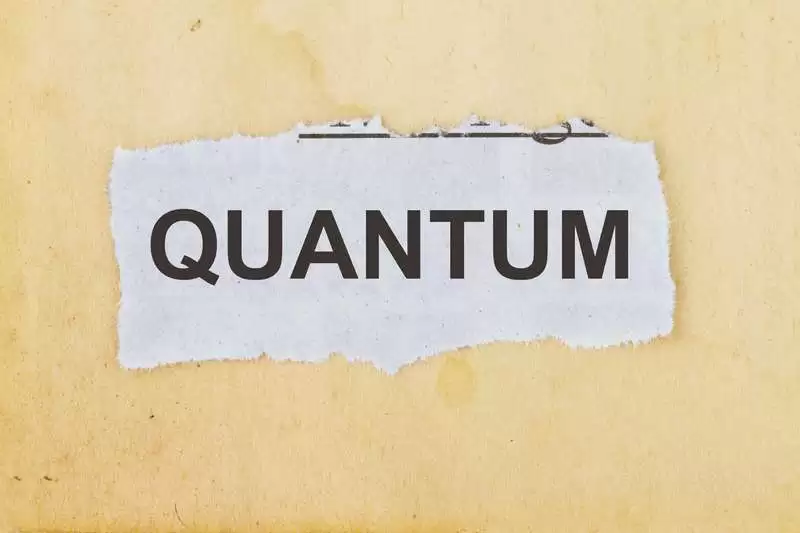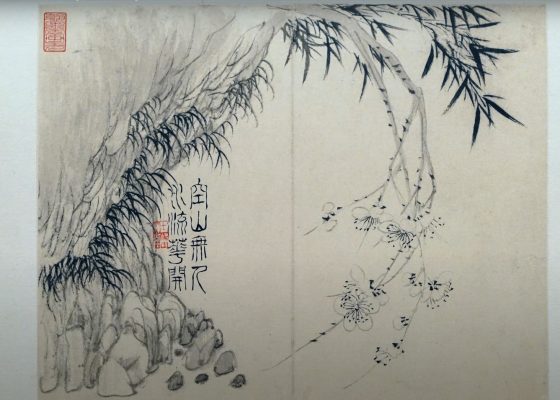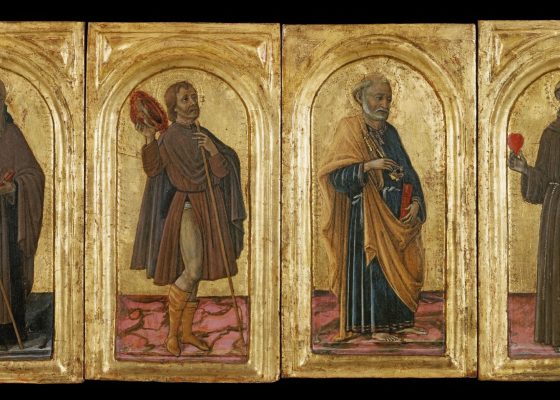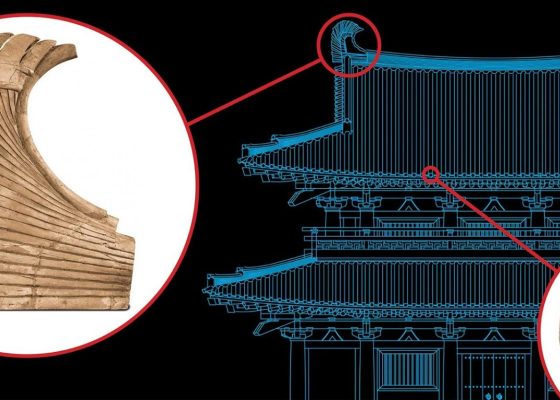
By Akerele Christabel
90 years after the discoveries of the double-slit experiment took the scientific world by storm, physicists still face the problem of grasping the concepts of another reality. In the last article, we attempted to give a very simple overview of what physics is, more specifically, what quantum physics is. In this article, will look at how the fathers of modern physics attempted to grasp the concepts of quantum reality.
The Copenhagen Approach To Quantum Physics.
To understand the many probabilistic possibilities that the quantum realm seems to present, in 1920, Niels Bohr (alongside other prominent scientists) came up with an approach called the Copenhagen Interpretation of Quantum Mechanics. The interpretation is based upon the concepts of “continuous probabilities.”
What this approach is trying to explain is that there are two ways to view matter (which has both particle and wave properties) and those are the “and” way and the “or” way. In clearer terms, it means that a particle can either be here “and” there or it could either be here “or” there.
David Wallace, Professor of Philosophy at the University of Southern California, and the author of a book on the Everett interpretation of quantum mechanics titled “The Emergent Multiverse,” believes that if quantum mechanics is taken seriously, it would lead to “…this crazy idea of there being many parallel going-on at the same time.” This is the inspiration behind the concept of parallel universes also called the Many Worlds Theory.
It is important to note that quantum mechanics theory is not just describing the probability of things happening, but rather describing the fact that they really did happen, as distinct events in different universes at the same time.
The Copenhagen Interpretation, therefore, means that a particle does not actually exist in one state OR another, but in all its states at once. You could call it the “and reality.” This is the standard theory for understanding quantum mechanics, and it is also responsible for our current notion of parallel universes, where there are infinite versions of ourselves that make all other possible decisions other than the ones that we make.
The possibility that this notion is correct has created a real philosophical and mathematical challenge for physicists.
The first concept that was challenged by this theory is that of man as a creature of free will.. In this case, the theory presents us as creatures who are a part of a great flow of events of which our many selves must inevitably make certain decisions as we fulfill our role in maintaining this reality.
Even though this theory continues to remain the standard approach to understanding quantum reality, many modern physicists now believe it is “anti-realistic”. One such physicist is a Professor of Chemistry at the University of California, Berkeley, Birgitta Whaley.
“If we are to follow this many-worlds hypothesis- the scenario that all possible probabilities are actually happening in a parallel universe, the question of what determines how many universes and how to measure the endless probabilities that could exist, persist” she explains.
If there are so many universes, why do we not experience the many outcomes that are possible? What is our experience in that other world? Is there a way to determine it? Can we predict our decision in this world? Can we communicate with that other world? Dr. Birgitta refers to these questions as a state of Decoherence.
According to Techopedia, Quantum Coherence is defined as the idea that an individual particle has a wave function. Decoherence, therefore, means the loss of quantum coherence. Like the science journal, Scientific puts it:
“It is like taking a long-exposure photograph of someone who is moving. The photograph becomes blurry, and it becomes difficult to discern exactly how the person is moving.”
If particles are always here “and” there, our measurements are therefore “blurry.”
The trustworthiness of Bohr’s interpretation is further challenged when one considers the many factors that have been neglected. Factors such as the environment can affect the measuring devices and therefore the outcomes also influence the accuracy of our measurements.
Can It Be Trusted?
Dr. Gerard ’t Hooft believes the Copenhagen calculation is incomplete and is therefore prone to error. Dr. Gerard ’t Hooft is a Professor of Theoretical Physics at Utrecht University in the Netherlands and winner of the 1999 Nobel Prize in Physics for work in quantum field theory that laid the foundation for the standard model of particle physics.
“The quantum mechanics today is the best we have to do the calculation. But the best we have does not mean that the calculation is extremely accurately correct. So, according to the equations, we get these many worlds. I agree with that statement. But I do not agree with the statement that quantum mechanics is correct so that we have to accept all these other universes for being real. No, the calculation is incomplete. There is much more going on that we did not take into account,” Hooft states.
“All the particles we talk about are not real particles, they are mathematical abstractions of a real particle.” Dr. Gerard ’t Hooft continues, “We use that it is the best we can do, which is perfect. It is by far the best we can do, So, in practice, that is just fine. But you just have to be careful in interpreting your result. The result does not mean that the universe is split into many other universes. The results mean, yes, this answer is the best answer you can get.”
He believes that in the absence of unrecorded (and unavoidable) errors, the calculation is accurate- albeit not incomplete- and instead of getting certain measurements of the universe we are in, we get a superposition of different universes. In other words, our outcomes are rather “unrealistic.”
Hooft continues, “And that doesn’t mean that our theory is wrong,but that we made simplifications. We made lots of simplifications. Instead of describing the real world, we split up the real world in what I call templates.”
An Incomplete Theory.
In a normal mathematical setting, an answer can either be correct or incorrect. The current theory we have access to provides a pool of wrongs and rights. Scientists currently lack the means of making extremely accurate measurements without excluding the external and internal factors of errors. So, what we have today continues to be an incomplete theory.
In the real world, humans are never in superposition because the real world takes every single phenomenon into account
Schrodinger’s equation is another scientific approach that is considered foundational in understanding the basics of quantum mechanics. We will explore this in part three of this series












Cancel anytime


Using our website
You may use the The Middle Land website subject to the Terms and Conditions set out on this page. Visit this page regularly to check the latest Terms and Conditions. Access and use of this site constitutes your acceptance of the Terms and Conditions in-force at the time of use.
Intellectual property
Names, images and logos displayed on this site that identify The Middle Land are the intellectual property of New San Cai Inc. Copying any of this material is not permitted without prior written approval from the owner of the relevant intellectual property rights.
Requests for such approval should be directed to the competition committee.
Please provide details of your intended use of the relevant material and include your contact details including name, address, telephone number, fax number and email.
Linking policy
You do not have to ask permission to link directly to pages hosted on this website. However, we do not permit our pages to be loaded directly into frames on your website. Our pages must load into the user’s entire window.
The Middle Land is not responsible for the contents or reliability of any site to which it is hyperlinked and does not necessarily endorse the views expressed within them. Linking to or from this site should not be taken as endorsement of any kind. We cannot guarantee that these links will work all the time and have no control over the availability of the linked pages.
Submissions
All information, data, text, graphics or any other materials whatsoever uploaded or transmitted by you is your sole responsibility. This means that you are entirely responsible for all content you upload, post, email or otherwise transmit to the The Middle Land website.
Virus protection
We make every effort to check and test material at all stages of production. It is always recommended to run an anti-virus program on all material downloaded from the Internet. We cannot accept any responsibility for any loss, disruption or damage to your data or computer system, which may occur while using material derived from this website.
Disclaimer
The website is provided ‘as is’, without any representation or endorsement made, and without warranty of any kind whether express or implied.
Your use of any information or materials on this website is entirely at your own risk, for which we shall not be liable. It is your responsibility to ensure any products, services or information available through this website meet your specific requirements.
We do not warrant the operation of this site will be uninterrupted or error free, that defects will be corrected, or that this site or the server that makes it available are free of viruses or represent the full functionality, accuracy and reliability of the materials. In no event will we be liable for any loss or damage including, without limitation, loss of profits, indirect or consequential loss or damage, or any loss or damages whatsoever arising from the use, or loss of data, arising out of – or in connection with – the use of this website.
Last Updated: September 11, 2024
New San Cai Inc. (hereinafter “The Middle Land,” “we,” “us,” or “our”) owns and operates www.themiddleland.com, its affiliated websites and applications (our “Sites”), and provides related products, services, newsletters, and other offerings (together with the Sites, our “Services”) to art lovers and visitors around the world.
This Privacy Policy (the “Policy”) is intended to provide you with information on how we collect, use, and share your personal data. We process personal data from visitors of our Sites, users of our Services, readers or bloggers (collectively, “you” or “your”). Personal data is any information about you. This Policy also describes your choices regarding use, access, and correction of your personal information.
If after reading this Policy you have additional questions or would like further information, please email at middleland@protonmail.com.
PERSONAL DATA WE COLLECT AND HOW WE USE IT
We collect and process personal data only for lawful reasons, such as our legitimate business interests, your consent, or to fulfill our legal or contractual obligations.
Information You Provide to Us
Most of the information Join Talents collects is provided by you voluntarily while using our Services. We do not request highly sensitive data, such as health or medical information, racial or ethnic origin, political opinions, religious or philosophical beliefs, trade union membership, etc. and we ask that you refrain from sending us any such information.
Here are the types of personal data that you voluntarily provide to us:
As a registered users or customers, you may ask us to review or retrieve emails sent to your business. We will access these emails to provide these services for you.
We use the personal data you provide to us for the following business purposes:
Information Obtained from Third-Party Sources
We collect and publish biographical and other information about users, which we use to promote the articles and our bloggers who use our sites. If you provide personal information about others, or if others give us your information, we will only use that information for the specific reason for which it was provided.
Information We Collect by Automated Means
Log Files
The site uses your IP address to help diagnose server problems, and to administer our website. We use your IP addresses to analyze trends and gather broad demographic information for aggregate use.
Every time you access our Site, some data is temporarily stored and processed in a log file, such as your IP addresses, the browser types, the operating systems, the recalled page, or the date and time of the recall. This data is only evaluated for statistical purposes, such as to help us diagnose problems with our servers, to administer our sites, or to improve our Services.
Do Not Track
Your browser or device may include “Do Not Track” functionality. Our information collection and disclosure practices, and the choices that we provide to customers, will continue to operate as described in this Privacy Policy, whether or not a “Do Not Track” signal is received.
HOW WE SHARE YOUR INFORMATION
We may share your personal data with third parties only in the ways that are described in this Privacy Policy. We do not sell, rent, or lease your personal data to third parties, and We does not transfer your personal data to third parties for their direct marketing purposes.
We may share your personal data with third parties as follows:
There may be other instances where we share your personal data with third parties based on your consent.
HOW WE STORE AND SECURE YOUR INFORMATION
We retain your information for as long as your account is active or as needed to provide you Services. If you wish to cancel your account, please contact us middleland@protonmail.com. We will retain and use your personal data as necessary to comply with legal obligations, resolve disputes, and enforce our agreements.
All you and our data are stored in the server in the United States, we do not sales or transfer your personal data to the third party. All information you provide is stored on a secure server, and we generally accepted industry standards to protect the personal data we process both during transmission and once received.
YOUR RIGHTS/OPT OUT
You may correct, update, amend, delete/remove, or deactivate your account and personal data by making the change on your Blog on www.themiddleland.com or by emailing middleland@protonmail.com. We will respond to your request within a reasonable timeframe.
You may choose to stop receiving Join Talents newsletters or marketing emails at any time by following the unsubscribe instructions included in those communications, or you can email us at middleland@protonmail.com
LINKS TO OTHER WEBSITES
The Middle Land include links to other websites whose privacy practices may differ from that of ours. If you submit personal data to any of those sites, your information is governed by their privacy statements. We encourage you to carefully read the Privacy Policy of any website you visit.
NOTE TO PARENTS OR GUARDIANS
Our Services are not intended for use by children, and we do not knowingly or intentionally solicit data from or market to children under the age of 18. We reserve the right to delete the child’s information and the child’s registration on the Sites.
PRIVACY POLICY CHANGES
We may update this Privacy Policy to reflect changes to our personal data processing practices. If any material changes are made, we will notify you on the Sites prior to the change becoming effective. You are encouraged to periodically review this Policy.
HOW TO CONTACT US
If you have any questions about our Privacy Policy, please email middleland@protonmail.com
The Michelin brothers created the guide, which included information like maps, car mechanics listings, hotels and petrol stations across France to spur demand.
The guide began to award stars to fine dining restaurants in 1926.
At first, they offered just one star, the concept was expanded in 1931 to include one, two and three stars. One star establishments represent a “very good restaurant in its category”. Two honour “excellent cooking, worth a detour” and three reward “exceptional cuisine, worth a
Thank you for your participation,
please Log in or Sign up to Vote

123Sign in to your account